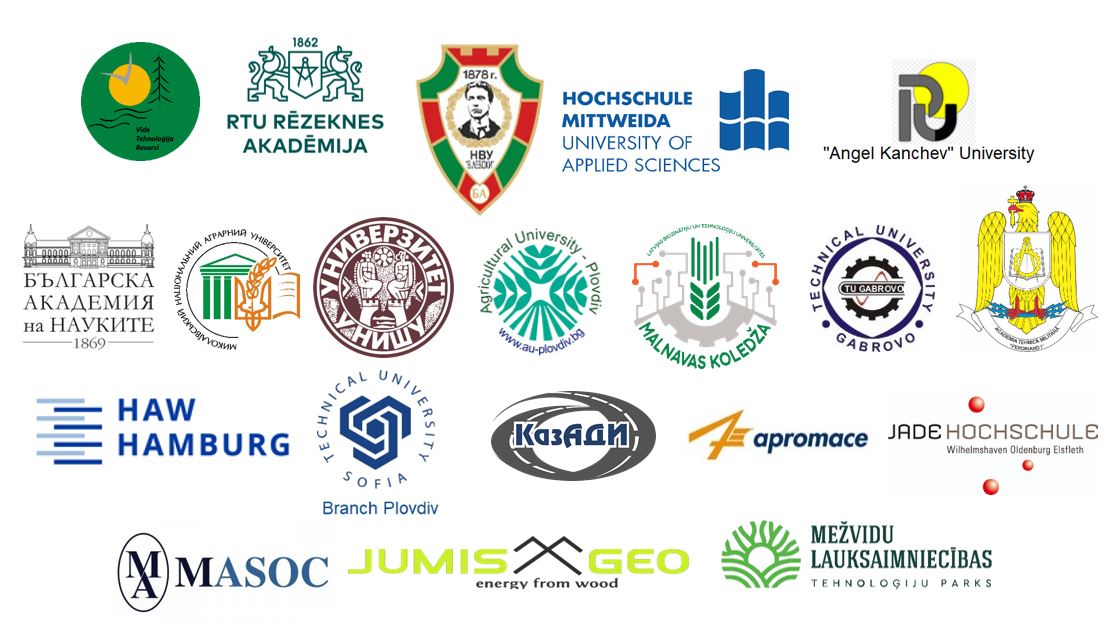CASE STUDY OF STRUCTURAL RELIABILITY OF EXISTING BUILDING
##manager.scheduler.building##: Atbrivosanas aleja 115, k-4 (Faculty of Engineering)
##manager.scheduler.room##: Room 308
Last modified: 01.06.2017
Abstract
Structural reliability of buildings has become an important issue after the collapse of a shopping centre in Riga 21.11.2013, caused the death of 54 people. The reliability of a building is the practice of designing, constructing, operating, maintaining and removing buildings in ways that ensure maintained health, ward suffered injuries or death due to use of the building. Evaluation and improvement of existing buildings is becoming more and more important.
For a large part of existing buildings, the design life has been reached or will be reached in the near future. The structures of these buildings need to be reassessed in order to find out whether the safety requirements are met. The safety requirements provided by the Eurocodes are a starting point for the assessment of safety. However, it would be uneconomical to require all existing buildings and structures to comply fully with these new codes and corresponding safety levels, therefore the assessment of existing buildings differs with each design situation. This case study describes the simple and practical procedure of determination of minimal reliability index β of existing steel structures designed by different codes than Eurocodes and allows to reassess the actual safety level of different structural elements of existing buildings under design load.
Keywords
References
[1] Dalia Abdelaziz Elsorady, Assessment of the compatibility of new uses for heritage buildings; Journal of Cultural Heritage 15 (2014) 511–521.
[2] Simone Ferrari, Federica Zagarella, Costs assessment for building renovation cost-optimal analysis Energy Procedia 78 (2015) 2378 – 2384.
[3] Francesca Cappelletti, Tiziano Dalla Mora, Fabio Peron, Piercarlo Romagnoni, Paolo Ruggeri, Building renovation: which kind of guidelines could be proposed for policy makers and professional owners? Energy Procedia 78 (2015) 2366 – 2371.
[4] National Construction Programme [online]. Riga, Cabinet of Ministers. 2002. [cited 30 August 2002]. Available, from Internet: http://likumi.lv/doc.php?id=65990u (in Latvian).
[5] The Latvian Eurocode National Implementation plan for 2013-2014 years [online]. Riga, Cabinet of Ministers. 2012. [cited 10 January 2013]. Available from Internet: http://www.likumi.lv/doc.php?id=247907 (in Latvian).
[6] Liga Gaile, Andina Sprince, Leonids Pakrastinsh, Specific Challenges of Adopting Eurocodes in Latvia, Procedia Engineering 57 (2013) 294 – 301.
[7] Construction Law [online]. Riga, Latvian Parliament, 2013 [cited 30 July 2013]. Available, from Internet: http://likumi.lv/doc.php?id=258572 (in Latvian).
[8] Regulation (EU) No 305/2011 of the European Parliament and of the Council of 9 March 2011 laying down harmonised conditions for the marketing of construction products and repealing Council Directive 89/106/EEC, Strasbourg, 9 March 2011. Available, from Internet: http://eur-lex.europa.eu/legal-content/EN/TXT/?uri=CELEX:32011R0305
[9] Bertram KühnAssessment of existing steel structures - Recommendations for estimation of the remaining fatigue life Procedia Engineering 66 (2013) 3 – 11
[10] Dir.u.Prof.Dr.W.Rücker, Dipl.-Ing. F.Hille, Dipl.-Ing.R.Rohrmann, F08a Guideline for the Assessment of Existing Structures, Federal Institute of Materials Research and Testing (BAM), Samco 2006;
[11] Dimitris Diamantidis; Paolo Bazzurro Safety acceptance criteria for existing structures, University of Applied Sciences, Regensburg
[12] M.Sykora, M.Holicky, Target reliability levels for the assessment of existing structures
[13] Quanwang Li_, Bruce R. Ellingwood, Damage inspection and vulnerability analysis of existing buildings with steel moment-resisting frames, Engineering Structures 30 (2008) 338–351
[14] Daniel W.M. Chan, Tracy N.Y. Choi, Difficulties in executing the Mandatory Building Inspection Scheme (MBIS) for existing private buildings in Hong Kong, Habitat International 48 (2015) 97-105.
[15] Sophie I.Hallstedt Sustainability criteria and sustainability compliance index for decision support in product development, Journal of Cleaner production 140 (2017) 251-266
[16] Raji Banani, Maria.M.Vahdati, Mehdi Shahrestani, Derek Clements-Croome, The development of building assessment criteria framework for sustainable non-residental buildings in Saudi Arabia; Sustainable Cities and Society 26 (2016) 289-305;
[17] Zhenjun Ma, Paul Cooper, Daniel Daly, Laia Ledo, Existing building retrofits: Methodology and state-of-the-art; Energy and Buildings 55 (2012) 889-902
[18] Nuno Pereira, Xavier Romão; Assessment of the concrete strength in existing buildings using a finite population approach, Construction and Building Materials 110 (2016) 106–116.
[19] Szigeti, F. and Davis, G, Using the ASTM/ANSI Standards for Whole Building Functionality and Serviceability for major asset and portfolio decisions, CIB World Building Congress, April 2001, Wellington, New Zealand, Paper: CLI 16.
[20] Ki-Uhn Ahn, Deuk-Woo Kim, Young-Jin Kim, Cheol-Soo Park, In-Han Kim, Gaussian Process model for control of an existing building, Energy Procedia 78 ( 2015 ) 2136 – 2141.
[21] B. Radhika, C.S. Manohar, Reliability models for existing structures based on dynamic state estimation and data based asymptotic extreme value analysis, Probabilistic Engineering Mechanics 25 (2010) 393_405
[22] Wei Gao, Chongmin Song, Francis Tin-Loi, Probabilistic interval analysis for structures with uncertainty, Structural Safety 32 (2010) 191–199.
[23] Starr, Ch.: "Social Benefit versus Technological Risk"; Science, Vol. 165, No. 19, S. 1232, 1969
[24] R.D.J.M.Steenbergen, A.C.W.M.Vrouwenvelder; Safety philosophy for existing structures and partial factors for traffic loads on bridges, TNO, Built Environment and Geosciences, Delft , the Nederlands, HERON Vol.55 (2010) No.2 125-139
[25] Dr.Nico P.M.Scholten, Prof.Ton.C.W.M Vrouwenvelder, Eurocodes and structural safety of the existing buildings – considering the publication of the Dutch NEN 8700, 4th International Conference Civil Engineering 13, Proceeding Part II, Building and Renovation
[26] V.V.Nadolskiy, M.Sykora, M.Holicky, Comparison of Reliability levels provided by the Eurocodes and standards of the Republic of Belarus, Vestnik MGSU, 2013
[27] Paul Luechinger; Juerg Fischer, New European Technical Rules for the assessment and retrofitting of existing structures, European Commission, Joint Research Centre, Institute for the Protection and Security of the Citizen, 2015
[28] EN 1990:2002 Eurocode: Basis of structural design
[29] Implementation of Eurocodes. Handbook 2. Reliability background. Guide to basis of structural reliability and risk engineering related to Eurocodes, supplemented by practical examples. Leonardo da Vinci pilot project CZ/02/B/F/PP-134007, Prague 10, 2005
[30] SNIP 2.01.07-85* Building regulations. Loads and actions. USSR State Building. 1987.
[31] ISO 2394: 2015 General principles on reliability for structures
[32] CEN/TC/250/WG2 Assessment and retrofitting of existing structures, Bases. Report N2032, 2014
[33] ISO 13822:2010 Bases for design of structures – Assessment of existing structures

